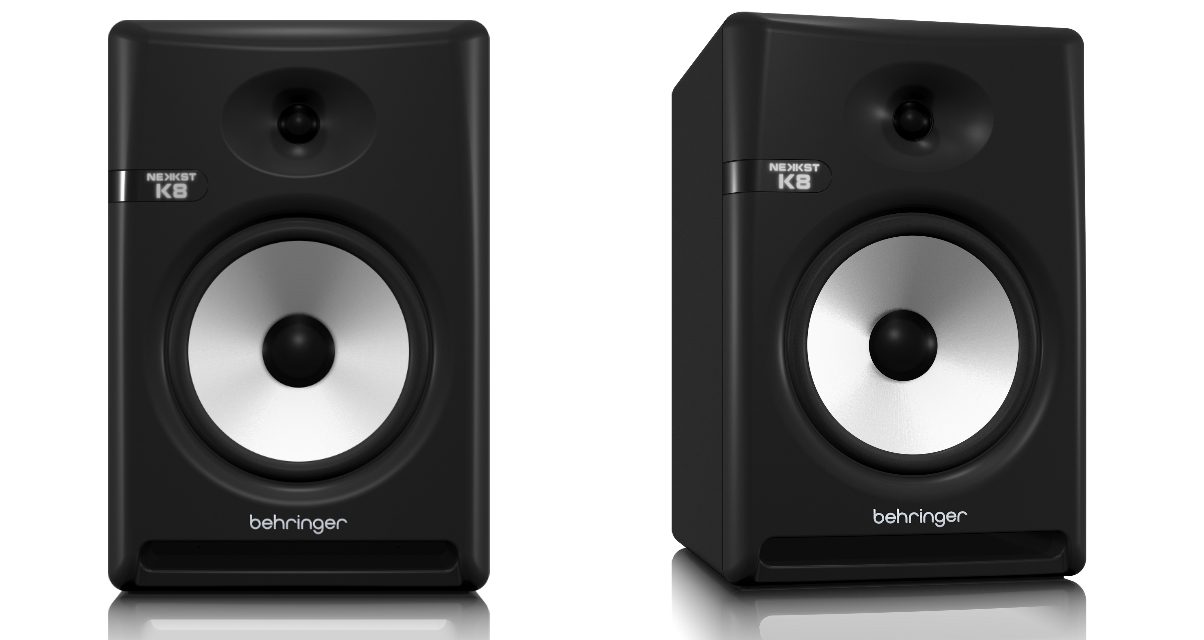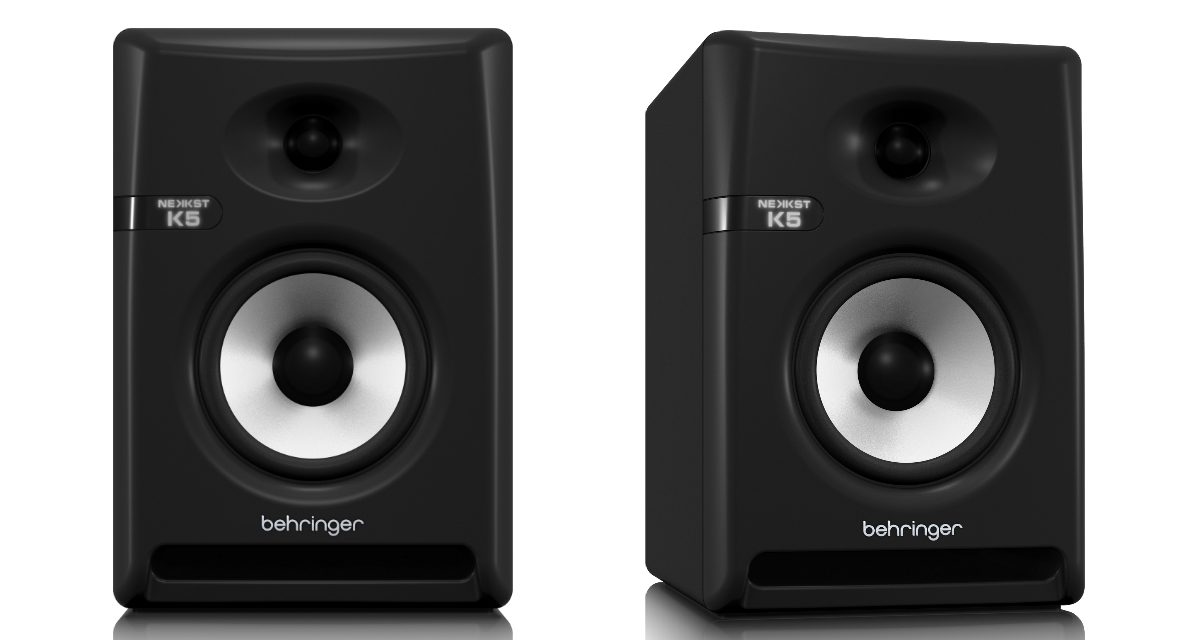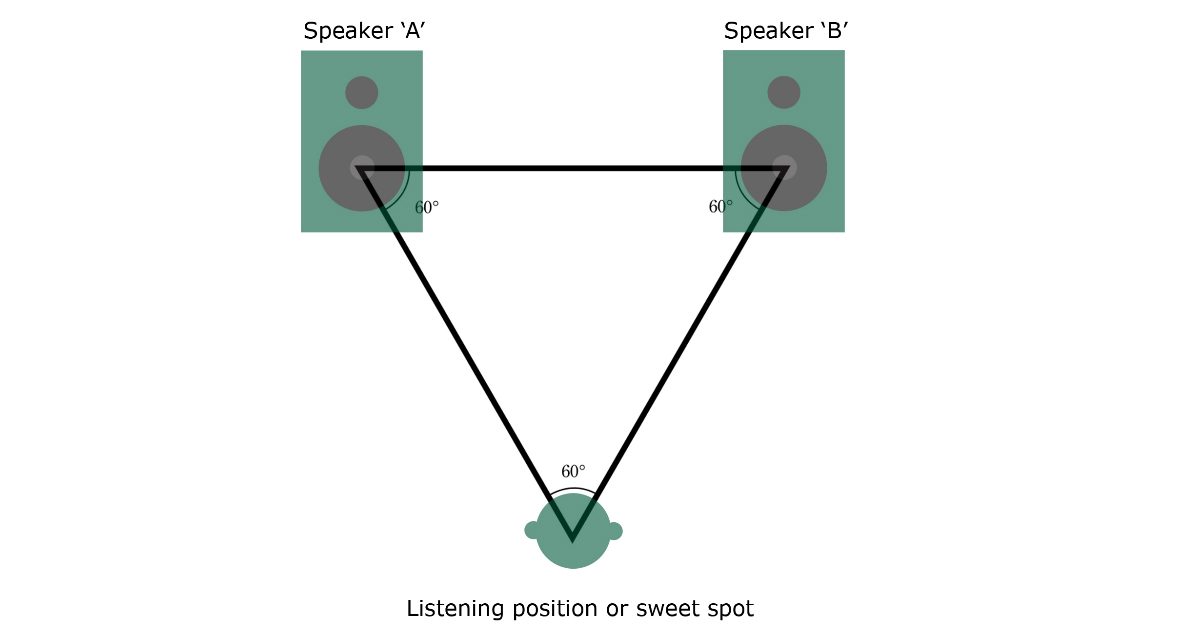The Lowdown
The Nekkst speakers are what a modern, budget monitor for beginners have evolved to become: They sound decent, have speaker and room compensation features, and are priced to move. I wouldn’t hesitate to recommend the K8 to a budding DJ/producer. The K5’s would make a great set of second reference monitors if you want to check if the track you’re producing or mixing is starting to get cluttered.
Video Review
First Impressions / Setting up

I placed the Nekkst K5 and K8 in my project studio. Getting them up and running was fairly simple: Each speaker comes with three inputs – XLR, 1/4″, and RCA, so hooking them up to my Komplete Audio 6 sound card was no problem, and using them with my DJ controller was fairly easy too.
What I first appreciated about these speakers is that they’ve got switches in the back to tailor them to your home DJ studio environment and preference. There’s a High Frequency switch that lets you add treble if your room is too “dead” (eg you’ve got wall to wall carpeting and thick curtains in your room, which absorb sound), and you can decrease the treble too if your room is quite “live” (eg your room has a lot of hard surfaces like dry wall and concrete, which reflect sound). You can also opt to use these to roll off the highs if you find them too bright.
Further, the K5 and K8 come with two types of low frequency switches that let you decrease, or “roll off”, the bass: First is the Low Frequency switch that lets you lower the bass when using either the K5 or K8 with the K10 subwoofer (which will handle most of the low end). You can also use it to simulate what your mix would sound like when coming from a smaller speaker.
More importantly, the K5 and K8 come with the second type of switch called Room Compensation: Most of us bedroom DJ/producers work in less than ideal monitoring environments (eg the aforementioned bedroom). Because we don’t always have space to dedicate to just our laptop and speaker set-up, we end up putting our rig on a desk flush against a wall, which bumps the bass response, or worse, in a corner of our room. Low frequencies tend to build up in room corners, and this leads to great difficulty in accurate mixing and producing because of the bumped up bass that you hear – you may find that your mix is too thin or too thick when listening in the car or in your earbuds.
The Room Compensation switch rolls off the bass depending on where you’ve got it set: It has three settings, and the highest setting dips the bass for when you’ve got the speakers in a corner.
Switches like these are more common now thanks to the proliferation of home studios (KRK comes to mind), but in the past these were rare features that were built into more top-tier gear for engineers who really liked to fine tune a system to their liking.
They’ve got their own power supplies and onboard amplifiers (they’re bi-amped, meaning one amp drives the tweeter and one the woofer), so I jacked in the power cord, switched them on, and got going.
In Use
Nekkst K8

I started off by listening to the larger K8 model. I played chart dance music, and immediately apparent was how bright they were – they were so bright, in fact, that I had to turn them down because I felt that they were shrill. Again, I’m not a fan of these types of speakers when it comes to tweeters, so it’s a good thing that they’ve got the High Frequency switches. I went ’round the back of the speakers and moved them two notches to the right to the -2 setting: Still a bit bright, but much better.
The next thing I noticed here was how pronounced the midrange was: Vocals, synthesisers, guitars, snare drums… you name it, they cut through. My favourite test for this is when I take a new song I’ve been listening to for a few weeks, and then I listen to them again with new speakers – suddenly, you hear nuances in the recording that you didn’t realise were there before. In this case, I was able to hear some clever vocal harmonies and panning tricks in the latest Disclosure track with Lorde. Impressive.
The low end in the K8 is nothing to write home about – it’s certainly there, but without any striking characteristics and details that grab at you. They’re just OK for producing (hardly any monitors at this price range have exceptional bass, anyway), but for DJ studio use, you may find it lacking power somewhat. Pairing them with the K10 would fix that, I’m assuming.
Nekkst K5

I tried the K5 after, which is the smallest in the Nekkst line. At around US$50 cheaper than the K8, the K5 comes in with just a 5″ woofer but with all the rear switches and connectivity intact. I listened to the same songs, and here’s what I found:
First, the low end is a lot less (no surprise there) – smaller speakers mean a contracted bass response. The highs were still very much similar to the K8 since it’s using the same 1″ soft dome tweeter across all models, and I had to turn this down a bit same as I did with the K8 using the High Frequency switch in the back.
Now the good part – the midrange here is still very much upfront, although it does tend to sound a little bit more “constricted” in comparison to the K8. The same songs played back revealed some vocals that were a little less clear (“smeared” is the term that often gets used here), but if you didn’t have the K8 as a point of reference you wouldn’t really notice it.
The cool bit here was when I played back some productions that I made recently and realised that there were some instruments in my mix that were “fighting” with my vocals and stepping on each other in the mids – the Nekkst K5 had no problem revealing these, and I thought that was quite brilliant.
Conclusion

All in all, I’d say that the midrange was the winner in both the K5 and K8: They were just really “there” without being in your face, and while the K8 sounded clearer and more open, the K5 isn’t so bad too in the mids department – if you’re producing and mixing a track and you could make it sound good on these, you know it’d sound better on larger systems.
I thought the bass was lacking a bit on both speakers – not enough detail on the K8, not enough power on the K5, but you’d really have to spend a bit more to get higher quality bass anyway. If you’re looking for a bigger, bass-heavy sound for DJing, you may want to look at the K10.
The highs were quite shrill, but having the High Frequency switch at the back made them a bit more listenable, and in the end I’m thankful that these speakers even came with that, somehow wishing that all other monitors would, too!
I’d say that the Nekkst speakers are what a modern, budget speaker monitor for beginners have evolved to become: They sound decent, have speaker and room compensation features, and are priced to move. These are a huge step up from the speaker monitors that Behringer produced in the early 2000s (had them, never really liked them), and really do perform despite their aforementioned shortcomings.
I’d recommend purchasing the K8 if you were looking to get serious with producing music but are on a tight budget – the features and performance you get out of it warrant a higher price tag, and these really would set you off on the right path instead of cheap PC speakers and the like.
If you’re limited by space, you may be looking at the K5, but I’d recommend getting a speaker with at least a 6″ woofer for more general DJ/producer use. I haven’t reviewed the K6 yet so I can’t recommend that just yet, but a similarly sized speaker would be the KRK Rokit 6, although you’re missing some Room Compensation and Low Frequency switches here.
In closing, Behringer has done a good job with these speakers, and I wouldn’t hesitate to recommend the K8 to a budding DJ/producer. If you’ve already got a set of speakers that you love, the K5’s would make a great set of second reference monitors if you want to check if the track you’re producing or mixing is starting to get cluttered.




